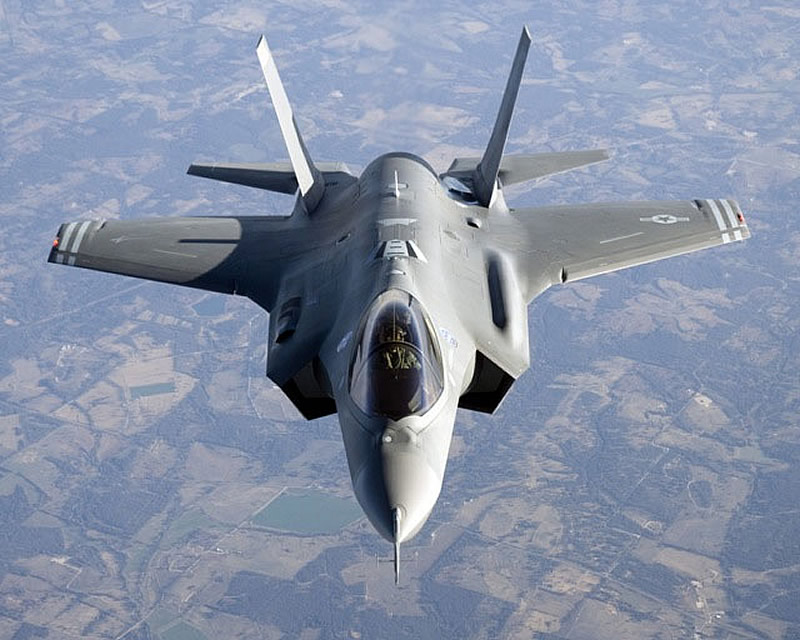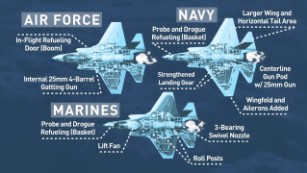Zarvan
ELITE MEMBER

- Joined
- Apr 28, 2011
- Messages
- 54,470
- Reaction score
- 87
- Country
- Location

(CNN)The F-35 Joint Strike Fighter is set to make its debut, and one of the nation's top Marines says if recent tests are any indication, things won't go well for the "bad guys."
The fighter jet has been in development for nearly 15 years and is touted as the most advanced weapons system of the modern era, combining stealth capabilities, supersonic speed, extreme agility and state-of-the-art sensor fusion technology.
The price tag for all these benefits, however, is nearly $400 billion, making the program the most expensive weapons system in world history. To maintain and operate the JSF program over the course of its lifetime, the Pentagon will invest nearly $1 trillion, according to the Government Accountability Office (GAO).
The jet has met all the necessary test criteria and Gen. Joseph Dunford, the Marine Corps commandant, is currently reviewing the paperwork that, once signed, will officially make the Marine version of the F-35 the first functional model of the fighter, Lt. Gen. Jon Davis, deputy commandant for Marine aviation, told reporters Monday.
"I wasn't expecting to be surprised (during testing) and I didn't get surprised," Davis said, referring to his confidence in the fleet's ability to complete tests ranging from providing close air support to executing difficult reconnaissance missions.
However, the ability of the F-35, which is meant to serve a variety of roles, including combat and support missions, to prevail in a dogfight has been questioned.
In one case, the website War is Boring published excerpts of a test pilot's leaked report finding that the F-35 was "at a distinct energy disadvantage" in a mock dogfight in January and unable to turn quickly enough to engage the plane it is expected to replace, the F-16.
Joe DellaVedova, director of public affairs for the F-35 program, however, defended the F-35's performance, saying the leaked report lacked the proper context. Because the F-35 is a multirole fighter, unlike past models that were more specialized, improving the performance of certain capabilities involves giving up some ground in other areas, he said.
The F-35 is only going to improve after it is declared operational, he added, pointing to the fact that the military is still developing the necessary combat techniques to put the jet in the best position to succeed.
Davis also defended the F-35's dogfighting ability.

"I love the F-16, but I would not want to be in a full-out fight against an F-35 in an F-16," he said, pointing to a mock encounter where the military put up four F-35s "against nine bad guys, and it didn't go well for the bad guys."
Over the last decade, the Joint Strike Fighter has also faced criticism for a series of hardware malfunctions and software glitches that delayed the program for more than three years and pushed it some $200 billion over its initial budget.
In 2014, the entire fleet of F-35s was grounded following an engine fire. And there were setbacks at key milestones, including the start of the flight test program, delivery of the first production-ready aircraft and testing of critical missions systems, according the GAO.
However, the plane's prime contractor, Lockheed Martin, has said it believes the majority of difficult technical problems are in the past.
The F-35's first scheduled deployment is not slated until 2017; however, it could technically be deployed earlier if needed to meet national security demands, Davis said.
The Marines will continue to add features to the aircraft even after this fleet is deemed operational.
One such capability includes upgrading the jet's fusion sensor software so that it can more effectively gather and share information with several F-35s in a given area.
The military is also developing the best way to use the plane's gun and tweaking the pilot's helmet to improve vision at night.
Davis said the biggest hurdle moving forward will be building enough jets to replace the current fleet of aging aircraft.
The Pentagon is currently slated to purchase 2,443 F-35s, and Davis said he sees no reason to cut that number.
"Right now I can't imagine wanting to cut back on the buy, because right now I'm replacing a greater number of F-18s, Harriers and Prowlers," Davis said, referring to older aircraft currently in use.
"This is going to be a great airplane for the Marine Corps and the nation," he added. "I couldn't fathom wanting less of this capability."
F-35 set to make its debut - CNNPolitics.com
@Horus @Slav Defence @fatman17 @Munir @nair @SpArK @AUSTERLITZ






